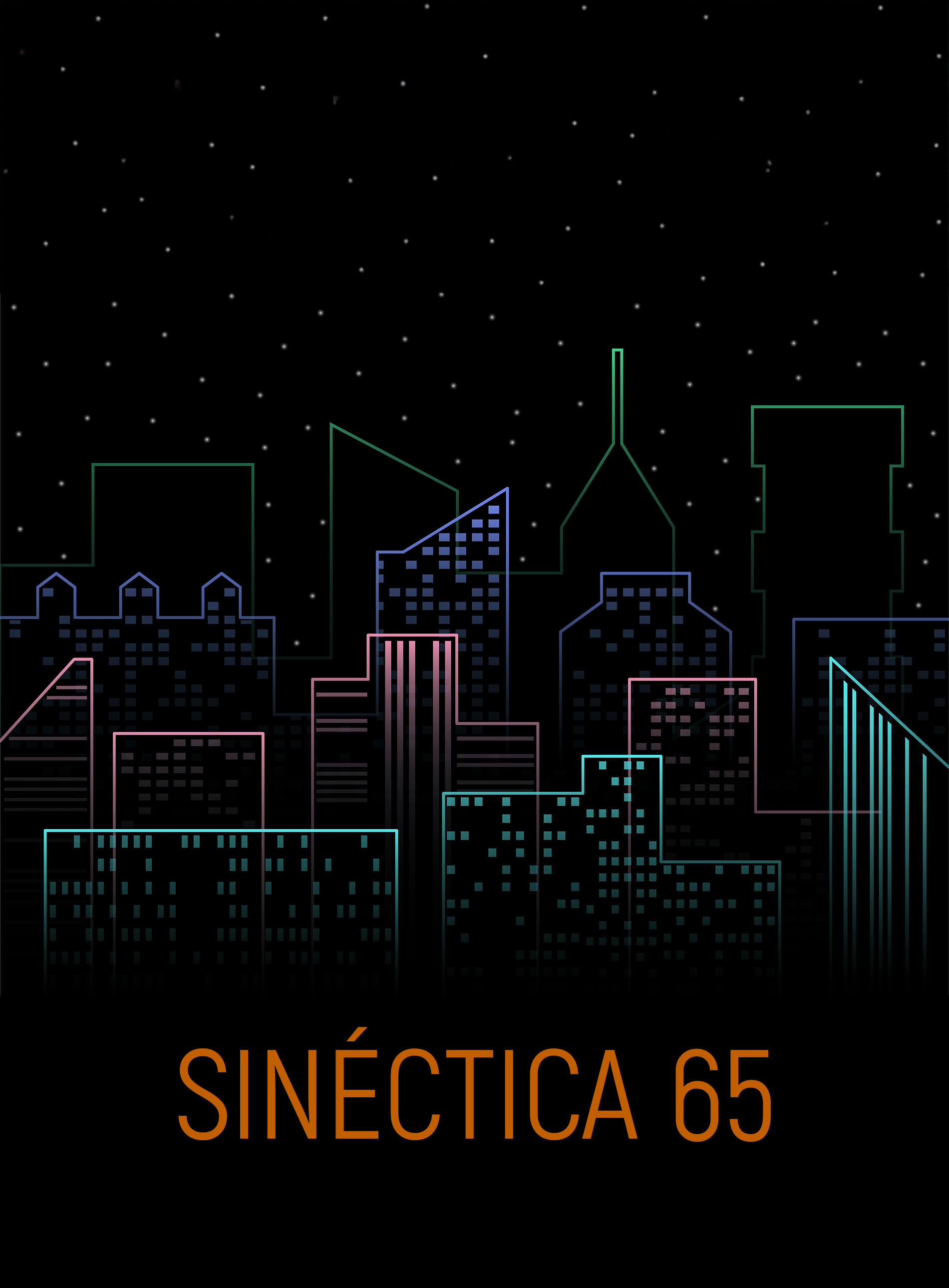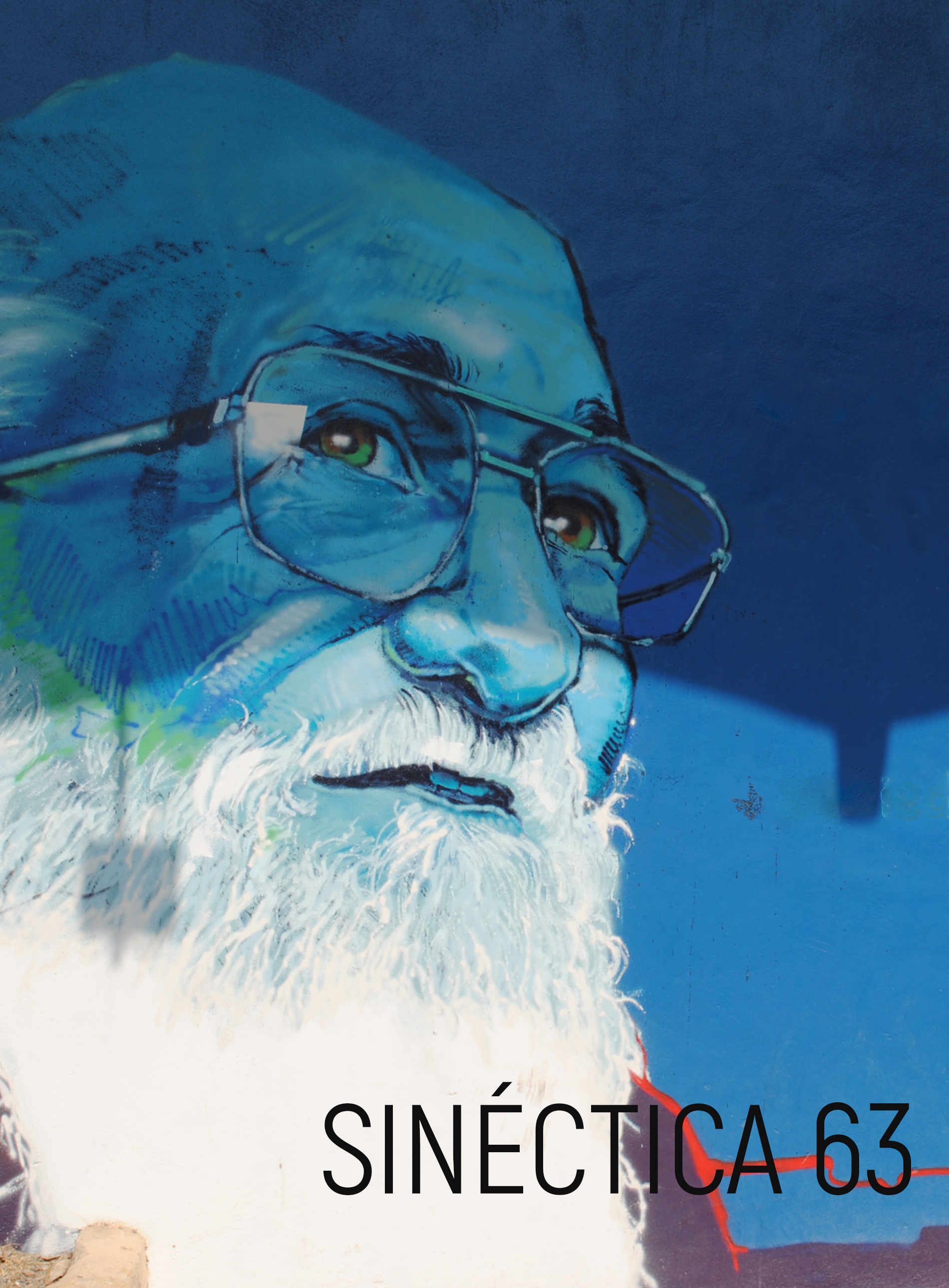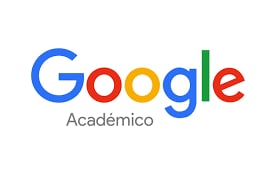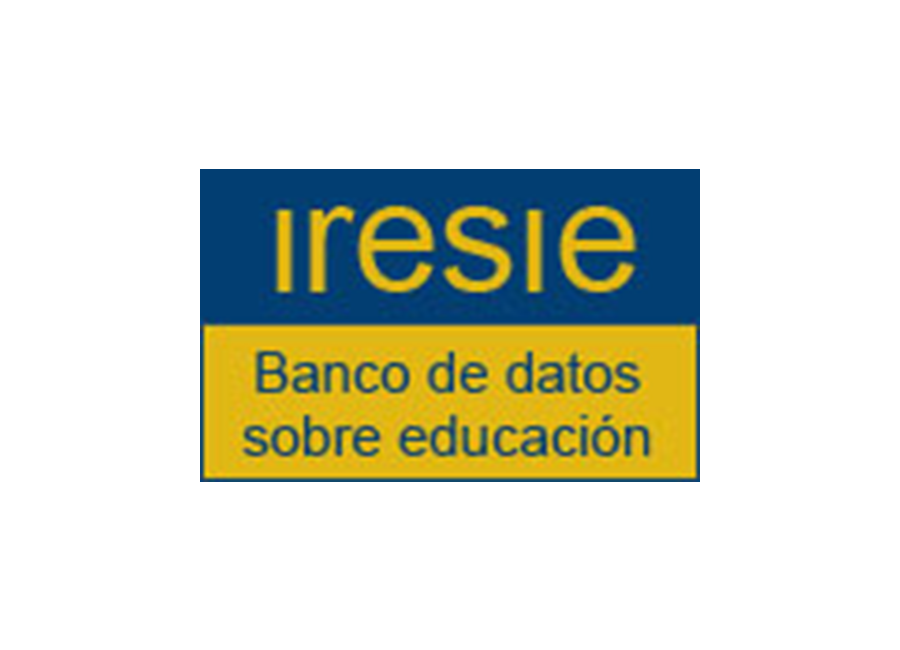"Gamification" of teaching science, technology, engineering and mathematics: Conceptual cartography
DOI:
https://doi.org/10.31391/S2007-7033(2020)0054-002Keywords:
gamification, conceptual cartography, educative serious games, game-based learningAbstract
The purpose of this documentary research, carried out with the method of Conceptual Cartography, was to make a conceptual study of the term “gamification”, specifically in the learning of science, technology, engineering and mathematics (STEM). A total of 287 texts were obtained and finally 39 documents were selected for revision. Eight axes of analysis were applied: notion, categorization, characterization, differentiation, division, linkage, methodology and exemplification. The result was a systematization of the concept “gamification” and its methodological aspects for the teaching of STEM. The main finding was a differentiation between “gamification”, “educative serious games” and “game-based learning”. This would allow planning differentiated educational stra- tegies according to specific teaching objectives.
Downloads
References
Adams, D. M., & Clark, D. B. (2014). Integrating self-explanation functionality into a complex game environment: Keeping gaming in motion. Computers & Education, 73, 149–159. https://doi.org/10.1016/j.compedu.2014.01.002
Ameerbakhsh, O., Maharaj, S., Hussain, A., & McAdam, B. (2018). A comparison of two methods of using a serious game for teaching marine ecology in a university setting. International Journal of Human-Computer Studies. https://doi.org/10.1016/j.ijhcs.2018.07.004
Anderson, C. G., Dalsen, J., Kumar, V., Berland, M., & Steinkuehler, C. (2018). Failing up: How failure in a game environment promotes learning through discourse. Thinking Skills and Creativity. https://doi.org/10.1016/j.tsc.2018.03.002
Annetta, L., Lamb, R., Minogue, J., Folta, E., Holmes, S., Vallett, D., & Cheng, R. (2014). Safe science classrooms: Teacher training through serious educational games. Information Sciences, 264, 61–74. https://doi.org/10.1016/j.ins.2013.10.028
Anupam, A., Gupta, R., Naeemi, A., & JafariNaimi, N. (2018). Particle in a Box: An Experiential Environment for Learning Introductory Quantum Mechanics. IEEE Transactions on Education, 61(1), 29–37. https://doi.org/10.1109/TE.2017.2727442
Bergeron, B. (2006). Appendix A: glossary. En Developing serious games (p. 398). Hingham: Charles River Media.
Bermeo Yaffar, F., Hernández Mosqueda, S., & Tobón, S. (2016). Análisis documental de la V heurística mediante la cartografía conceptual. Ra Xim Hai, 12, 103–121. https://doi.org/10.35197/rx.12.01.e3.2016.05.fb
Berns, A., Palomo-Duarte, M., Dodero, J. M., & Valero Franco, C. (2013). Using 3-D online games to assess students’ foreign language acquisition and communicative competence. https://doi.org/10.1007/978-3-642-40814-4-3
Bogost, I. (2011). Gamification Is Bullshit. The Atlantic. Recuperado de https://www.researchgate.net/publication/273946902_Gamification_Is_Bullshit
Braghirolli, L. F., Ribeiro, J. L. D., Weise, A. D., & Pizzolato, M. (2016). Benefits of educational games as an introductory activity in industrial engineering education. Computers in Human Behavior, 58, 315–324. https://doi.org/10.1016/j.chb.2015.12.063
Bybee, R. (2010). Advancing STEM Education: A 2020 Vision. Technology and Engineering Teacher, 70(1), 30–35.
Chappin, E. J. L., Bijvoet, X., & Oei, A. (2017). Teaching sustainability to a broad audience through an entertainment game – The effect of Catan: Oil Springs. Journal of Cleaner Production, 156, 556–568. https://doi.org/10.1016/j.jclepro.2017.04.069
Chu, S. L., Angello, G., Saenz, M., & Quek, F. (2017). Fun in Making: Understanding the experience of fun and learning through curriculum-based Making in the elementary school classroom. Entertainment Computing, 18, 31–40. https://doi.org/10.1016/j.entcom.2016.08.007
de-Marcos, L., García-Cabot, A., & García, E. (2017). Towards the social gamification of e-learning: A practical experiment, 33, 66–73. Recuperado de https://www.researchgate.net/publication/316664417_Towards_the_social_gamification_of_e-learning_A_practical_experiment
de Carvalho, C. V., Caeiro-Rodriguez, M., Llamas Nistal, M., Hromin, M., Bianchi, A., Heidmann, O., … Metin, A. (2018). Using Video Games to Promote Engineering Careers. International Journal of Engineering Education, 34(2, A), 388–399.
Derboven, J., Zaman, B., Geerts, D., & Grooff, D. De. (2016). Playing educational math games at home: The Monkey Tales case. Entertainment Computing, 16, 1–14. https://doi.org/10.1016/j.entcom.2016.05.004
Deterding, S., Dixon, D., Khaled, R., & Nacke, L. (2011). From Game Design Elements to Gamefulness: Defining Gamification. En Proceedings of the 15th International Academic MindTrek Conference: Envisioning Future Media Environments, MindTrek 2011 (Vol. 11, pp. 9–15). https://doi.org/10.1145/2181037.2181040
Díaz-Barriga, F., & Hernández, G. (2002). Estrategias docentes para un aprendizaje significativo: Una interpretación constructivista. (2ª ed.). Ciudad de México: McGraw-Hill Interamericana.
Freeman, B., & Higgins, K. (2016). A randomised controlled trial of a digital learning game in the context of a design-based research project. International Journal of Technology Enhanced Learning, 8(3–4), 297–317. https://doi.org/10.1504/IJTEL.2016.10001504
Fuentes Hurtado, M., & González Martínez, J. (2017). Secondary Teachers Training Needs to Implement Gamified Experiences in STEM. RED-Revista de Educación a Distancia, (54). https://doi.org/10.6018/red/54/8
Gauthier, A., Corrin, M., & Jenkinson, J. (2015). Exploring the influence of game design on learning and voluntary use in an online vascular anatomy study aid. Computers & Education, 87, 24–34. https://doi.org/10.1016/j.compedu.2015.03.017
Girard, C., Ecalle, J., & Magnan, A. (2013). Serious games as new educational tools: How effective are they? A meta-analysis of recent studies. Journal of Computer Assisted Learning (Vol. 29). https://doi.org/10.1111/j.1365-2729.2012.00489.x
Hamada, M., & Sato, S. (2011). A Game-based Learning System for Theory of Computation Using Lego NXT Robot. Procedia Computer Science, 4, 1944–1952. https://doi.org/10.1016/j.procs.2011.04.212
Hodges, G. W., Wang, L., Lee, J., Cohen, A., & Jang, Y. (2018). An exploratory study of blending the virtual world and the laboratory experience in secondary chemistry classrooms. Computers & Education, 122, 179–193. https://doi.org/10.1016/j.compedu.2018.03.003
Hung, H.-T. (2017). Clickers in the flipped classroom: bring your own device (BYOD) to promote student learning. Interactive Learning Environments, 25(8), 983–995. https://doi.org/10.1080/10494820.2016.1240090
Huotari, K., & Hamari, J. (2017). A definition for gamification: anchoring gamification in the service marketing literature. Electronic Markets, 27(1), 21–31. https://doi.org/10.1007/s12525-015-0212-z
Jagoda, P., Gilliam, M., McDonald, P., & Russell, C. (2015). Worlding through Play Alternate Reality Games, Large-Scale Learning, and The Source. American Journal of Play, 8(1), 74–100.
Jenson, J., & Droumeva, M. (2016). Exploring Media Literacy and Computational Thinking: A Game Maker Curriculum Study. Electronic Journal of E-Learning, 14(2), 111–121.
Johnson-Glenberg, M. C., & Megowan-Romanowicz, C. (2017). Embodied science and mixed reality: How gesture and motion capture affect physics education. Cognitive Research: Principles and Implications, 2(1), 24. https://doi.org/10.1186/s41235-017-0060-9
Kangas, M., Koskinen, A., & Krokfors, L. (2017). A qualitative literature review of educational games in the classroom: the teacher’s pedagogical activities. Teachers and Teaching, 23(4), 451–470. https://doi.org/10.1080/13540602.2016.1206523
Kapp, K. (2012). The Gamification of learning and instruction. Game-based methods and strategies for training and education (1st ed.). Pfeiffer.
Kiili, K., Moeller, K., & Ninaus, M. (2018). Evaluating the effectiveness of a game-based rational number training - In-game metrics as learning indicators. Computers & Education, 120, 13–28. https://doi.org/10.1016/j.compedu.2018.01.012
Kim, B., & Ho, W. (2018). Emergent social practices of Singapore students: The role of laughter and humour in educational gameplay. International Journal of Child-Computer Interaction, 16, 85–99. https://doi.org/10.1016/j.ijcci.2018.01.001
Klabbers, J. (2009). Terminological Ambiguity: Game and Simulation. Simulation & Gaming - Simulat Gaming, 40, 446–463. https://doi.org/10.1177/1046878108325500
Kumar, J., & Herger, M. (2013). Gamification at Work: Designing Engaging Business Software (1a ed.). The Interaction Design Foundation. Recuperado de https://www.researchgate.net/publication/262312974_Gamification_at_Work_Designing_Engaging_Business_Software
Lathrop, C., & Mackenzie, M. E. (2001). The Commission on National Security / 21st Century: A Hart-Rudman Comission Primer. Recuperado de https://www.ausa.org/sites/default/files/NSW-01-2-The-Commission-on-National-Security-21st-Century-A-Hart-Rudman-Commission-Primer.pdf
Latulipe, C., Long, B., & Seminario, C. (2015). Structuring Flipped Classes with Lightweight Teams and Gamification. En SIGCSE ’15 Proceedings of the 46th ACM Technical Symposium on Computer Science Education (pp. 392–397). https://doi.org/10.1145/2676723.2677240
Leandro Eichler, M., Perry, G., Lima Lucchesi, I., & Meléndez, T. (2018). Mobile Game-Based Learning in STEM Subjects.
Lee, J., & Hammer, J. (2011). Gamification in Education: What, How, Why Bother? Academic Exchange Quarterly, 15, 1–5. Recuperado de https://www.researchgate.net/publication/258697764_Gamification_in_Education_What_How_Why_Bother
Lester, J. C., Spires, H. A., Nietfeld, J. L., Minogue, J., Mott, B. W., & Lobene, E. V. (2014). Designing game-based learning environments for elementary science education: A narrative-centered learning perspective. Information Sciences, 264, 4–18. https://doi.org/10.1016/j.ins.2013.09.005
Li, Y., Huang, Z., Jiang, M., & Chang, T.-W. (2016). The Effect on Pupils’ Science Performance and Problem-Solving Ability through Lego: An Engineering Design-based Modeling Approach. Educational Technology & Society, 19(3, SI), 143–156.
Lin, D. T., Park, J., Liebert, C. A., & Lau, J. N. (2015). Validity evidence for Surgical Improvement of Clinical Knowledge Ops: a novel gaming platform to assess surgical decision making. The American Journal of Surgery, 209(1), 79–85. https://doi.org/10.1016/j.amjsurg.2014.08.033
Llorens, F., Durán, F. J., Villagrá, C., Rosique, P., Satorre-Cuerda, R., & Molina-Carmona, R. (2016). Gamification of the Learning Process: Lessons Learned. IEEE Revista Iberoamericana de Tecnologías del Aprendizaje, 11, 1. https://doi.org/10.1109/RITA.2016.2619138
Locke, J. (1986). Pensamientos sobre la educación (Traducción). Madrid: Akal.
Marín, I., & Hierro, E. (2013). Gamificación: El poder del juego en la gestión empresarial y la conexión con los clientes. Barcelona: Urano / Empresa Activa.
Mellor, K. E., Coish, P., Brooks, B. W., Gallagher, E. P., Mills, M., Kavanagh, T. J., … Anastas, P. T. (2018). The safer chemical design game. Gamification of green chemistry and safer chemical design concepts for high school and undergraduate students. Green Chemistry Letters and Reviews, 11(2), 103–110. https://doi.org/10.1080/17518253.2018.1434566
Morley, M. S., Khoury, M., & Savić, D. A. (2017). Serious Game Approach to Water Distribution System Design and Rehabilitation Problems. Procedia Engineering, 186, 76–83. https://doi.org/10.1016/j.proeng.2017.03.213
Morschheuser, B., Hassan, L., Werder, K., & Hamari, J. (2018). How to design gamification? A method for engineering gamified software. Information and Software Technology, 95, 219–237. https://doi.org/10.1016/J.INFSOF.2017.10.015
Nathan, M. J., & Walkington, C. (2017). Grounded and embodied mathematical cognition: Promoting mathematical insight and proof using action and language. Cognitive Research - Principles and Implications, 2. https://doi.org/10.1186/s41235-016-0040-5
New Media Consortium. (2014). Horizon Report, Edición Educación Superior. Recuperado de https://conectate.uniandes.edu.co/images/pdf/2014-nmc-horizon-report-es-official.pdf
Ortiz, M., Chiluiza, K., & Valcke, M. (2016). Gamification in higher education and STEM: A systematic review of literature, 6548–6558. https://doi.org/10.21125/edulearn.2016.0422
Pedersen, M. K., Svenningsen, A., Dohn, N. B., Lieberoth, A., & Sherson, J. (2016). DiffGame: Game-based Mathematics Learning for Physics. Procedia - Social and Behavioral Sciences, 228, 316–322. https://doi.org/10.1016/j.sbspro.2016.07.047
Peng, C., Cao, L., & Timalsena, S. (2017). Gamification of Apollo lunar exploration missions for learning engagement. Entertainment Computing, 19, 53–64. https://doi.org/10.1016/j.entcom.2016.12.001
Perini, S., Luglietti, R., Margoudi, M., Oliveira, M., & Taisch, M. (2018). Learning and motivational effects of digital game-based learning (DGBL) for manufacturing education –The Life Cycle Assessment (LCA) game. Computers in Industry, 102, 40–49. https://doi.org/10.1016/j.compind.2018.08.005
Praet, M., & Desoete, A. (2014). Enhancing young children’s arithmetic skills through non-intensive, computerised kindergarten interventions: A randomised controlled study. Teaching and Teacher Education, 39, 56–65. https://doi.org/10.1016/j.tate.2013.12.003
Revelo, O., Collazos, C. A., & Jiménez-Toledo, J. (2018). La gamificación como estrategia didáctica para la enseñanza/aprendizaje de la programación: un mapeo sistemático de literatura. Lámpsakos, (19), 31–46. https://doi.org/10.21501/21454086.2347
Riera, B., Annebicque, D., & Vigário, B. (2016). HOME I/O: an example of Human-Machine Systems concepts applied to STEM education. IFAC-PapersOnLine, 49(19), 233–238. https://doi.org/10.1016/j.ifacol.2016.10.530
Rodríguez, M., Díaz, I., González, E. J., & González-Miquel, M. (2018). Motivational active learning: An integrated approach to teaching and learning process control. Education for Chemical Engineers, 24, 7–12. https://doi.org/10.1016/j.ece.2018.06.003
Rowe, E., Asbell-Clarke, J., Baker, R. S., Eagle, M., Hicks, A. G., Barnes, T. M., … Edwards, T. (2017). Assessing implicit science learning in digital games. Computers in Human Behavior, 76, 617–630. https://doi.org/10.1016/j.chb.2017.03.043
Sailer, M., Hensen, J. U., Mayr, S., & Mandl, H. (2017). How gamification motivates: An experimental study of the effects of specific game design elements on psychological need satisfaction. Computers in Human Behavior, (69), 371–380. https://doi.org/10.1016/j.chb.2016.12.033
Sánchez-Martín, J., Cañada-Cañada, F., & Dávila-Acedo, M. A. (2017). Just a game? Gamifying a general science class at university: Collaborative and competitive work implications. Thinking Skills and Creativity, 26, 51–59. https://doi.org/10.1016/j.tsc.2017.05.003
Seixas, L., Gomes, A., & Melo Filho, I. (2016). Effectiveness of Gamification in the Engagement of Students. Computers in Human Behavior, 58, 48–63. https://doi.org/10.1016/j.chb.2015.11.021
Shih, J.-L., Huang, S.-H., Lin, C.-H., & Tseng, C.-C. (2017). STEAMing the Ships for the Great Voyage: Design and Evaluation of a Technology-integrated Maker Game. Interaction Design and Architectures, (34, SI), 61–87.
Smith, K., Shull, J., Dean, A., Shen, Y., & Michaeli, J. (2016). SiGMA: A software framework for integrating advanced mathematical capabilities in serious game development. Advances in Engineering Software, 100, 319–325. https://doi.org/10.1016/j.advengsoft.2016.08.007
Smithsonian Science Education Center. (2019). The STEM Imperative. Recuperado de https://ssec.si.edu/stem-imperative
Steghöfer, J.-P., Burden, H., Alahyari, H., & Haneberg, D. (2017). No silver brick: Opportunities and limitations of teaching Scrum with Lego workshops. Journal of Systems and Software, 131, 230–247. https://doi.org/10.1016/j.jss.2017.06.019
Subhash, S., & Cudney, E. (2018). Gamified Learning in Higher Education: A Systematic Review of the Literature. Computers in Human Behavior (Vol. 87). https://doi.org/10.1016/j.chb.2018.05.028
Taub, M., Azevedo, R., Bradbury, A. E., Millar, G. C., & Lester, J. (2018). Using sequence mining to reveal the efficiency in scientific reasoning during STEM learning with a game-based learning environment. Learning and Instruction, 54, 93–103. https://doi.org/10.1016/j.learninstruc.2017.08.005
The EU Framework for Research and Innovation. (2011). Proposal for a regulation of the European Parliament and of the council establishing Horizon 2020 - The Framework Programme for Research and Innovation (2014-2020). Recuperado de https://eur-lex.europa.eu/legal-content/EN/TXT/PDF/?uri=CELEX:52011PC0809&from=EN
Tobón, S. (2012). Cartografía conceptual: estrategia para la formación y evaluación de conceptos y teorías. México: CIFE.
Valle, A., González-Cabanach, R., Cuevas-González, L. M., & Fernández- Suárez, A. P. (1998). Las estrategias de aprendizaje: características básicas y su relevancia en el contexto escolar. Revista de Psicodidáctica, (6), 53–68. Recuperado de https://www.redalyc.org/pdf/175/17514484006.pdf
Vate-U-Lan, P. (2015). Transforming Classrooms through Game-Based Learning: A Feasibility Study in a Developing Country. International Journal of Game-Based Learning, 5(1), 46–57. https://doi.org/10.4018/ijgbl.2015010104
Velázquez, G., & Salgado, J. (2016). Innovación tecnológica: un análisis del crecimiento económico en México (2002-2012: proyección a 2018). Análisis Económico, XXXI(78), 145–170. Recuperado de http://www.analisiseconomico.azc.uam.mx/index.php/rae/article/view/46
Villagrasa, S., Fonseca, D., Redondo, E., & Duran, J. (2014). Teaching case of gamification and visual technologies for education. Journal of Cases on Information Technology, 16(4), 38–57. https://doi.org/10.4018/jcit.2014100104
Vlachopoulos, D., & Makri, A. (2017). The effect of games and simulations on higher education: a systematic literature review. International Journal of Educational Technology in Higher Education, 14(1), 22. https://doi.org/10.1186/s41239-017-0062-1
Whalen, K. A., Berlin, C., Ekberg, J., Barletta, I., & Hammersberg, P. (2018). ‘All they do is win’: Lessons learned from use of a serious game for Circular Economy education. Resources, Conservation and Recycling, 135, 335–345. https://doi.org/10.1016/j.resconrec.2017.06.021
Wiggins, B. (2016). An Overview and Study on the Use of Games, Simulations, and Gamification in Higher Education. International Journal of Game-Based Learning (Vol. 6). https://doi.org/10.4018/IJGBL.2016010102
Zatarain Cabada, R. (2018). Reconocimiento afectivo y gamificación aplicados al aprendizaje de lógica algorítmica y programación. Revista Electrónica de Investigación Educativa, 20(3), 115–125. Recuperado de https://www.researchgate.net/publication/327534627_Reconocimiento_afectivo_y_gamificacion_aplicados_al_aprendizaje_de_Logica_algoritmica_y_programacion
Downloads
Published
Issue
Section
License
Copyright (c) 2020 Sinéctica

This work is licensed under a Creative Commons Attribution-NonCommercial 4.0 International License.
This work is licensed under a Creative Commons Attribution-NonCommercial 4.0 International license.
Authors who publish in Sinéctica agree to the following terms:
The authors retain copyright and grant the journal the right of first publication of the authorized work simultaneously under a Creative Commons Attribution License, which allows others to share the work as long as both the authorship of the work and the initial publication in this journal are acknowledged.
Authors may enter into additional separate contractual agreements for non-exclusive distribution of the published version of the journal (e.g., publishing in an institutional repository or a book), with acknowledgement of initial publication in this journal.
Authors are allowed to publish their work in institutional repositories or on their own website before and during the submission process, as it may generate productive exchanges, as well as earlier and greater citation of the published work.
Explanatory note: As of 2017 Sinéctica is governed by the Creative Commons Attribution Non-Commercial 3.0 International License, a version that standardizes licenses internationally.
Articles published between 1992 and 2016 are covered by a Creative Commons Attribution-NonCommercial-NoDerivatives 4.0 International license, which allows a work to be shared and distributed non-commercially and with acknowledgement of the author, but prohibits modification of the original creation.























